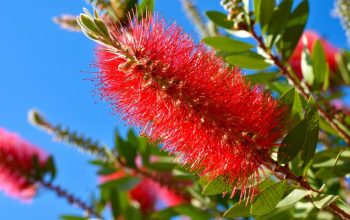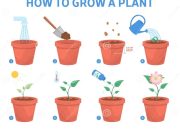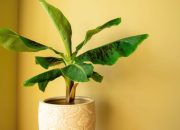Uses of 1 Gallon Plant Pots

1 gallon plant pots – One-gallon plant pots offer a versatile and practical solution for various stages of plant growth, from seed germination to mature plant development. Their size provides a balance between manageable size and sufficient space for root development, making them suitable for a wide range of horticultural applications.
Starting Seeds
One-gallon pots are ideal for starting seeds of larger plants that require more space than seed starting trays or smaller pots allow before transplanting. The ample volume ensures sufficient room for root growth, reducing transplant shock and promoting vigorous growth. This method is particularly beneficial for plants with delicate root systems that don’t transplant well.
- Tomatoes
- Peppers
- Eggplants
- Squash
- Sunflowers
Transplanting Seedlings
Once seedlings have developed a few sets of true leaves, transplanting them into one-gallon pots provides a significant step up in size, allowing them to continue growing robustly. The increased volume accommodates larger root systems and provides more space for nutrient uptake. This minimizes stress on the plant and accelerates its growth compared to remaining in smaller containers.
- Flowers (e.g., zinnias, marigolds, petunias)
- Herbs (e.g., basil, rosemary, thyme – after initial germination in smaller pots)
- Vegetables (e.g., lettuce, kale, chard)
Growing Herbs
Many herbs thrive in one-gallon pots, offering a convenient and space-saving way to cultivate fresh herbs for culinary use. The pot size is generally sufficient for the mature size of many common herbs, and the portability of the pots allows for easy relocation to sunny areas or protection from harsh weather.
- Basil
- Mint
- Parsley
- Chives
- Oregano
Nurturing Small Plants
One-gallon pots are suitable for a variety of small plants that don’t require extensive root space but benefit from a larger container than smaller pots offer. This provides better water retention and prevents the plant from becoming root-bound too quickly. This is particularly beneficial for plants with shallow or fibrous root systems.
One-gallon plant pots are a popular choice for starting seedlings and smaller plants, offering a good balance between size and manageability. For something a bit more visually interesting, you might consider the unique designs available, such as those found when searching for a hippie face plant pot amazon , which could add a fun, bohemian touch to your gardening setup.
Ultimately, the best pot size depends on the specific plant’s needs, but one-gallon pots are a versatile option for many species.
- Succulents (certain varieties)
- Small flowering annuals
- Small shrubs (young plants)
- Some varieties of ferns
Choosing the Right 1 Gallon Plant Pot

Selecting the appropriate 1-gallon plant pot is crucial for healthy plant growth. The right pot size, material, and drainage contribute significantly to a plant’s overall well-being, affecting factors like root development, water retention, and overall plant vigor. Ignoring these factors can lead to stunted growth, root rot, or even plant death.
Factors Influencing Pot Selection
Several key factors should be considered when choosing a 1-gallon pot for your plants. These include the plant’s specific needs, the pot’s material, and the presence of drainage holes. Careful consideration of these aspects ensures optimal growing conditions.
The Importance of Drainage Holes
Adequate drainage is paramount for plant health. Drainage holes prevent waterlogging, which can lead to root rot, a common cause of plant death. Waterlogged soil deprives roots of oxygen, hindering their ability to absorb nutrients and leading to decay. Pots without drainage holes should be avoided unless you are exceptionally skilled at controlling watering, and even then, the risk of root rot remains high.
Therefore, always prioritize pots with ample drainage holes.
Pot Selection Based on Plant Size, Root Development, and Environmental Conditions
Plant size and root development are closely linked to pot selection. A plant that’s root-bound in a small pot will show signs of stress, including stunted growth and yellowing leaves. Conversely, a plant placed in a pot that is too large may experience slow growth due to excessive moisture retention in the larger soil volume. For example, a small seedling would not thrive in a 1-gallon pot, while a larger, established plant might outgrow it quickly.Environmental conditions also play a role.
In hotter, drier climates, pots made of materials that retain less moisture, such as terracotta, might be preferred. In cooler, more humid environments, pots made of plastic, which retain moisture better, could be a better choice.
Decision-Making Flowchart for Choosing a 1-Gallon Plant Pot, 1 gallon plant pots
The following flowchart illustrates a step-by-step approach to selecting the right 1-gallon pot:
Start: Identify the plant species and its mature size.
Is the plant a seedling or established plant? Yes/No
If Yes (Seedling): Consider a smaller pot initially, and transplant as needed. If No (Established Plant): Proceed to next step.
Does the plant prefer well-drained or moist soil? Well-drained/Moist
If Well-drained: Choose a pot with multiple drainage holes, possibly terracotta. If Moist: Choose a pot with drainage holes, but perhaps one made of a material that retains moisture slightly better, such as plastic.
Does the environment have high temperatures and low humidity? Yes/No
If Yes: Prioritize a terracotta pot for better aeration and drying. If No: A plastic pot might be more suitable.
Select a 1-gallon pot that meets the above criteria. End.
Q&A
What are the typical dimensions of a 1-gallon plant pot?
While dimensions can vary slightly between brands, a standard 1-gallon pot is roughly 6 inches in diameter and 6 inches tall.
How often should I water plants in 1-gallon pots?
Watering frequency depends on factors like plant type, soil type, and weather. Generally, check the soil moisture daily; water when the top inch feels dry.
Can I use 1-gallon pots for all types of plants?
No. While suitable for many seedlings and smaller plants, larger plants will quickly outgrow them and become root-bound. Consider the plant’s mature size before choosing a pot.
What should I do if my plant becomes root-bound in a 1-gallon pot?
Repot the plant into a larger container. Carefully remove the plant, gently loosen the roots, and plant it in fresh soil in a larger pot.












